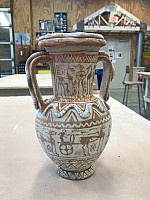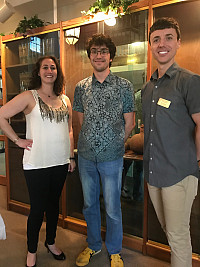Distinctive Collections
New Exhibit: Ancient Mediterranean Ceramics
Open gallery

As an undergrad student worker at Southwestern and a history major, my academic life and my work in Special Collections are often intertwined. I have done research for classes and projects here, using the Tower papers or other materials. My first time ever coming to Special Collections was in my Digital Humanities class, where we created online exhibits around objects in Special Collections. My experience is one we hope to replicate for students across campus, not just history majors. We at Special Collections are always looking for new ways to connect to campus life.
This week, we pioneered an all new kind of collaboration between the classroom and our department. I was lucky to be in the class “Ancient Mediterranean Ceramics and Archaeology” taught by Dr. Rachel Mittelman and Ron Geibel. Dr. Mittelman is a visiting professor of Ancient Mediterranean History and a working archaeologist, and Professor Geibel works in the ceramics department. This was my first team taught class, and for many of my classmates, it was either their first ceramics class or their first history class. Our professors had never done anything like this before either. We all felt like we were embarking on a grand experiment at the beginning of the semester.

Once our pots were finished, we fired them in a special process called Raku. Some of my classmates got to be there for this, and it sounds really cool; the pots were packed into flammable material, and the whole thing was lit on fire. This created an uneven, rustic finish on our pots, giving them the same weathered look that many of our ancient models had. Last Thursday and Friday, each of us brought our pots here, where Jason and Doreen helped us organize them in our exhibit cases. We each have photos of our ancient model and a description of our building methods next to our finished pot. Downstairs, the Steelman pottery is also displayed.

Our exhibit is open until the end of the semester (May 11th) so drop by and see the fruits of our labor!














